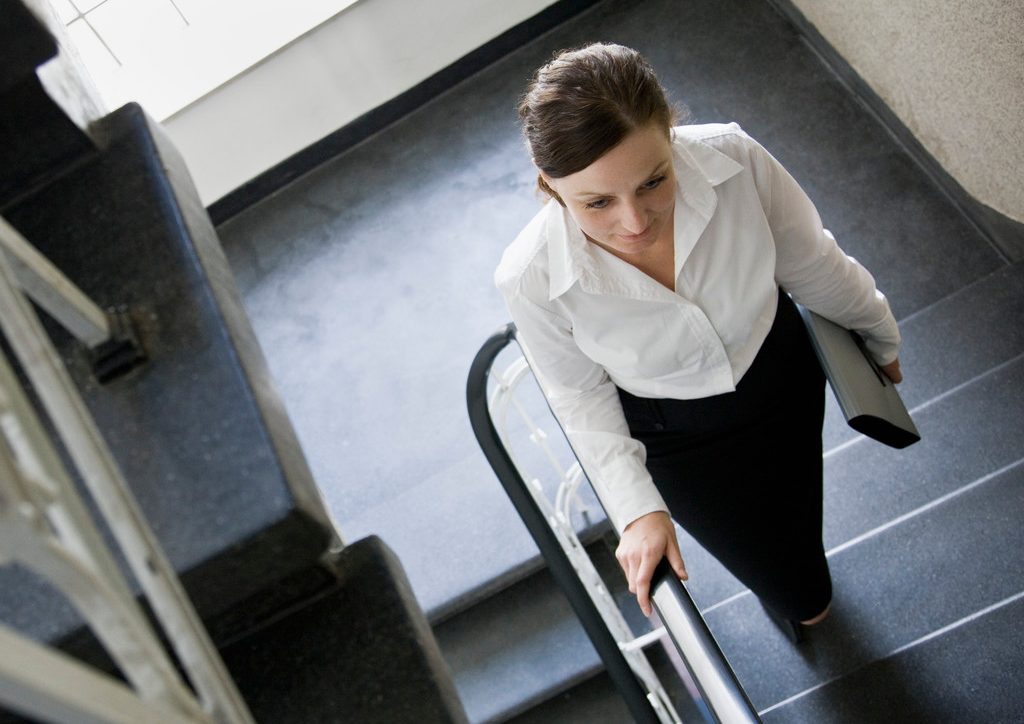Exercises You Can Do at Work

Sitting can shorten your life, increasing your risk for diabetes, obesity, and depression. Boost your health with exercises you can easily fit into your workday.
If you sit at a desk all day, your job is endangering your health. Long periods of sitting cut blood flow to your legs and increase your risk of everything from plaque buildup in your arteries to diabetes and depression. Yet less than a fifth of all jobs in the United States include any physical activity beyond using a keyboard.
That wasn’t true 50 years ago, when half of all U.S. jobs. involved moderate physical activity, according to a study at the University of South Carolina, which links sedentary jobs to the current obesity epidemic.
YOU MIGHT ALSO LIKE: The Benefits of Working Out
Sitting for hours each day is bad for you even if you also workout. Working eight hours straight and then sweating like mad at the gym isn’t the ticket. You need to move during those eight hours. All this bad news has led some people to try stand-up desks or treadmills under their desks, but the evidence for these strategies is mixed.
Try to move at least every half hour
Standing up, walking down the hall, or performing other moderate exercises for just two minutes can potentially extend the lifespan of those who otherwise sit for more than half of their waking hours, according to a study with data from more than 3,000 people. Scientists at the University of Utah School of Medicine found even a little movement throughout an otherwise mostly sedentary day lowered the risk of dying by 33 percent.
“Our study suggests that even small changes can have a big impact,” said lead researcher and biostatistician Tom Greene, PhD.
In addition to lowering your risk for certain health problems, taking a break from work for even a few minutes to exercise throughout your workday can boost your energy level.
Tips for exercising at work
- Take the stairs whenever you can — five to seven times a day is a good goal.
- March in place, take a brief walk around your office, or walk quickly up and down the hall to increase your energy and blood flow. For more intense exercise, bring your knees towards hip level and transfer your weight quickly while marching in place.
- Increase your heartrate with jumping jacks. For a lower impact version, raise your right arm out to the side while tapping your left toe out to the side, then switch sides.
- Do the football shuffle. Stand with your feet shoulder width apart, slightly bend your knees, and take quick steps.
- Strengthen your legs by standing with your feet hip width apart. Lower your hips slightly, as if you’re about to sit in a chair, then return to standing.
- Sit up tall in a chair, lift one leg, and straighten. Hold for two seconds and lower your leg. Repeat with the other side.
- Squeeze your shoulder blades together and away from your ears to stretch your back and shoulders. Hold for three seconds and release. Repeat 15 times.
- Hold your arms in front of you and gently circle your wrists in a clockwise motion followed by a counterclockwise motion.
- Make fists and then open your hands as wide as you can. Repeat several times.
If you work at home
Working from home has become trendy. Although some people like the freedom, flexibility, and lack of commuting, working at home can create other health risks.
An inadequate workspace (both at home and in the office) can lead to back and neck pain. To prevent or alleviate such pain, you should practice correct siting posture and take short breaks each hour to move around and stretch.
The UCLA Department of Ergonomics offers these tips for setting up a proper workstation.
Updated:
August 25, 2022
Reviewed By:
Janet O’Dell, RN